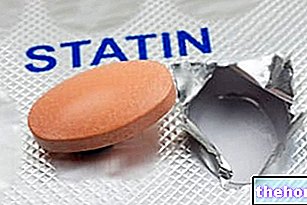
What is Lynparza and what is it used for?
Lynparza is an anticancer medicine indicated for the 'maintenance' treatment of adult patients with high-grade serous epithelial ovarian cancer (a type of advanced stage ovarian cancer), including cancer of the fallopian tubes (part of the reproductive system female that connects the ovaries to the uterus) and carcinoma of the peritoneum (the lining membrane of the abdomen). Lynparza is used in patients who have mutations (defects) in one of the two genes known as BRCA1 and BRCA2 and who have recurrent relapses (ie the cancer comes back after treatment). Lynparza is given after therapy with platinum-based medicines, when the size of the carcinoma has decreased or the tumor mass has completely disappeared. It is used in patients whose previous platinum-based drug therapy has produced a lasting response (lasting at least 6 months). Lynparza contains the active substance olaparib. Because the number of patients with ovarian cancer is low, the disease is considered 'rare', and Lynparza was designated an 'orphan medicine' (a medicine used in rare diseases) on 6 December 2007.
How is Lynparza used - olaparib?
Lynparza is available as capsules (50 mg) to be taken by mouth. The medicine can only be obtained with a prescription and treatment should be started and supervised by a doctor who specializes in cancer treatment. Before starting therapy, patients must be sure they have a BRCA gene mutation. Assessment of mutation status should be done in an appropriate laboratory by genetic testing. Treatment with Lynparza should be started within 8 weeks of taking the last dose of platinum-based chemotherapy. The recommended dose of Lynparza is 400 mg (eight capsules) to be taken twice a day. Treatment can be stopped and doses may be reduced in the event of undesirable effects. Lynparza should be taken at least one hour after food and patients should preferably refrain from eating for up to two hours. For further information, see the package leaflet.
How does Lynparza - olaparib work?
The active substance in Lynparza, olaparib, blocks the action of enzymes called human poly (ADP-ribose) polymerase (PARP), which help repair damaged DNA in cells (both healthy and cancer) during cell division. there is an alternative DNA repair mechanism that requires BRCA1 and BRCA2 proteins. This alternative mechanism does not work properly in cancer cells that have mutations in the BRCA1 or BRCA2 gene. Therefore, when PARP proteins are blocked, the DNA is damaged in cancer cells it cannot be repaired and, as a result, cancer cells die.
What benefit has Lynparza - olaparib shown during the studies?
Lynparza was shown to increase the length of time that patients do not show disease worsening in one main study involving 265 patients with high-grade serous ovarian cancer, including fallopian tube cancer or peritoneal cancer. The patients had undergone two or more courses of platinum-based chemotherapy and had a lasting response (the tumor had not progressed for at least 6 months) prior to the last course of therapy. This response to platinum-based medicines justified use of the latest platinum-based treatment. Lynparza was given within 8 weeks of the last course of platinum-based chemotherapy, when the tumor mass was in recession or had completely disappeared. About half of the patients participating in the study had BRCA mutations. In most cases, these were inherited mutations. Patients with a BRCA mutation treated with Lynparza survived on average longer without showing signs of disease progression than patients with a BRCA mutation treated with placebo (a dummy treatment), i.e. 11.2 months versus 4.3 months .
What is the risk associated with Lynparza - olaparib?
The most common side effects with Lynparza (which may affect more than 1 in 10 people) are tiredness, nausea, vomiting, diarrhea, dyspepsia (heartburn), headache, dysgeusia (taste disturbance), decreased appetite, dizziness, anemia (decrease in the number of red blood cells), lymphopenia and neutropenia (decrease in the number of certain types of white blood cells), increase in mean corpuscular volume (increase in the average size of red blood cells) and increase in creatinine (the presence of high blood creatinine levels indicate problems with kidney function.) For a full list of all side effects reported with Lynparza, see the package leaflet. Breastfeeding is contraindicated during treatment with Lynparza and up to at least one month after the last dose. For the full list of restrictions, see the package leaflet.
Why has Lynparza - olaparib been approved?
The Agency's Committee for Medicinal Products for Human Use (CHMP) decided that Lynparza's benefits are greater than its risks and recommended that it be approved for use in the EU. The CHMP is of the opinion that the benefit of Lynparza in Prolonging the survival of cancer patients with a BRCA mutation before disease progression is clinically relevant. In these patients, who usually have a poor diagnosis, there was an overall delay of 6.9 months in disease progression, which could allow for delay the next course of platinum-based chemotherapy. Regarding safety, side effects were mostly mild or moderate and generally proved manageable. The CHMP also noted that further studies are needed to further confirm the benefit of Lynparza, its effects on overall survival and its long-term safety.
What measures are being taken to ensure the safe and effective use of Lynparza - olaparib?
A risk management plan has been developed to ensure that Lynparza is used as safely as possible. Based on this plan, safety information has been added to the summary of product characteristics and package leaflet for Lynparza, including the appropriate precautions to be followed by healthcare professionals and patients. In addition, the company that markets Lynparza will carry out studies to further confirm the benefit of the medicine, including the long-term benefit in patients with ovarian cancer.
Other information about Lynparza - olaparib
On 16 December 2014, the European Commission issued a "Marketing Authorization" for Lynparza, valid throughout the European Union. For more information on Lynparza therapy, read the package leaflet (included with the EPAR) or consult your doctor. or the pharmacist. The summary of the opinion of the Committee for Orphan Medicinal Products for Lynparza is available on the Agency's website: ema.Europa.eu/Find medicine / Human medicines / Rare disease designation. Last update of this summary: 12-2014.
Information on Lynparza - olaparib published on this page may be out of date or incomplete. For a correct use of this information, see the Disclaimer and useful information page.




























